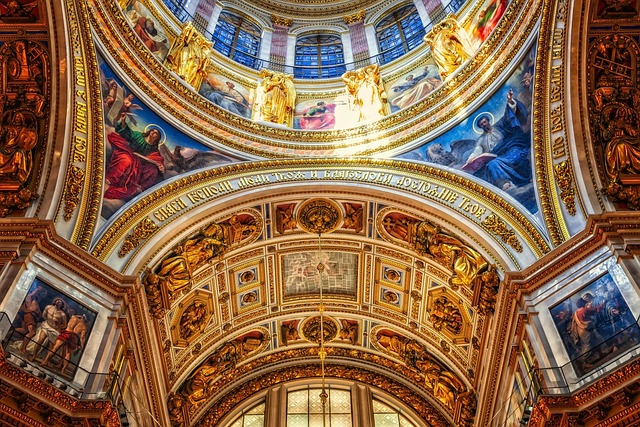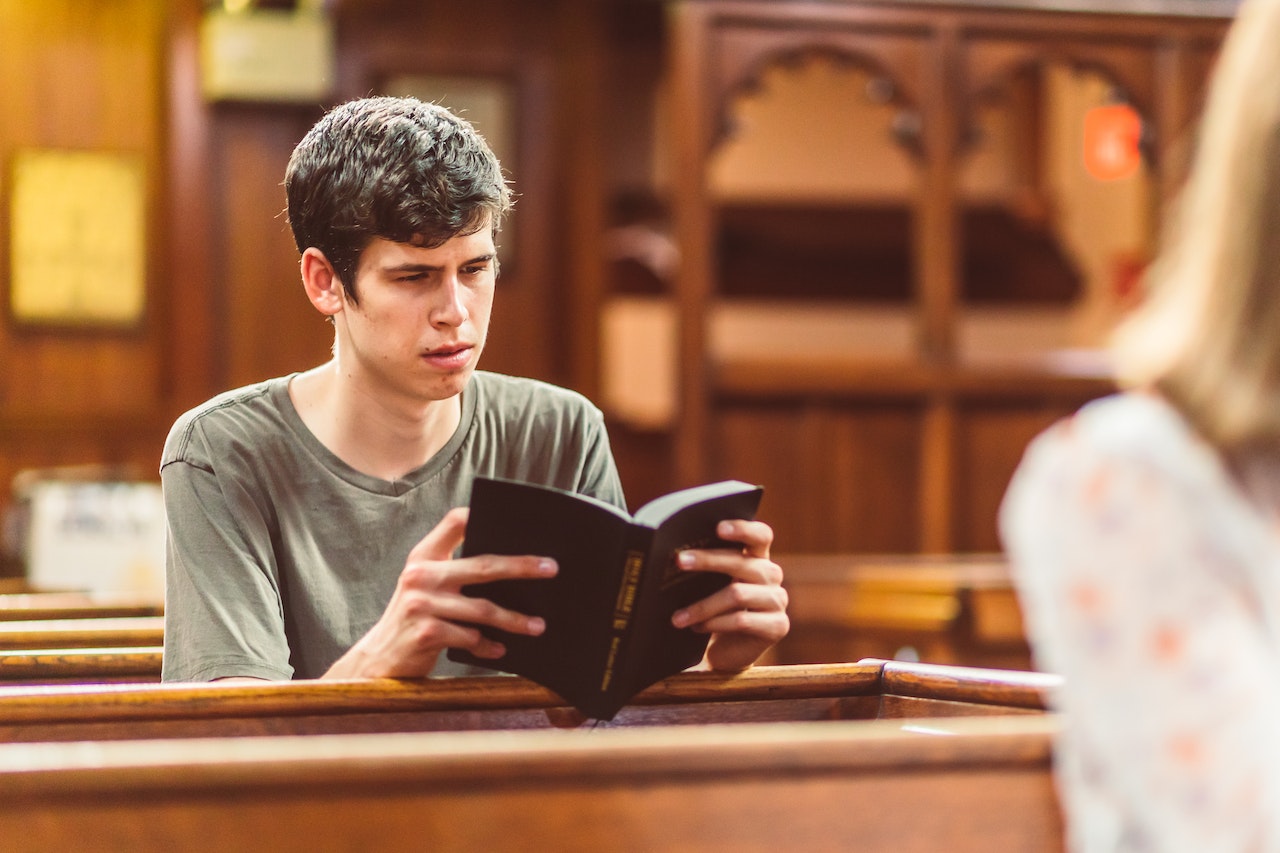Orthodoxy, also known as Eastern Orthodox Christianity, traces its origins back to the early days of Christianity. It emerged as a distinct branch of Christianity in the 1st century AD, following the teachings and practices of the apostles and early Christian communities.
Table of Contents
Origins and Early Development of Orthodox Christianity
When did Orthodox Christianity start? To answer this question, we need to delve into the origins and early development of this ancient faith. Orthodox Christianity, also known as Eastern Orthodox Christianity, traces its roots back to the time of Jesus Christ and the early apostles.
The story begins in the first century AD, when Jesus Christ founded the Christian faith. After his crucifixion and resurrection, his disciples spread his teachings throughout the Roman Empire and beyond. These early followers of Christ faced persecution and hardships, but their unwavering faith laid the foundation for what would later become Orthodox Christianity.
In the early centuries of Christianity, there was no single unified church. Instead, various Christian communities existed, each with its own traditions and practices. However, the seeds of what would become Orthodox Christianity were sown during this time.
One of the key figures in the development of Orthodox Christianity was the Apostle Peter. According to tradition, Peter traveled to Rome and became the first bishop of the city. This connection between Peter and Rome would later play a significant role in the split between the Eastern Orthodox Church and the Roman Catholic Church.
As the Roman Empire grew, so did the influence of Christianity. In the fourth century AD, Emperor Constantine the Great legalized Christianity and made it the official religion of the empire. This newfound acceptance brought both benefits and challenges to the early Christian communities.
With the rise of Christianity as the state religion, the church began to organize itself more formally. Ecumenical councils were convened to address theological disputes and establish a unified doctrine. These councils, such as the Council of Nicaea in 325 AD, played a crucial role in shaping the beliefs and practices of Orthodox Christianity.
During this time, the church in the East, centered in Constantinople (modern-day Istanbul), began to assert its independence from the church in Rome. Theological differences, cultural factors, and political tensions all contributed to the growing divide between the Eastern and Western branches of Christianity.
The Great Schism of 1054 marked the formal split between the Eastern Orthodox Church and the Roman Catholic Church. This division was the culmination of centuries of disagreements and tensions between the two branches. The Eastern Orthodox Church retained its ancient traditions and practices, while the Roman Catholic Church developed its own distinct theology and structure.
Despite the split, Orthodox Christianity continued to flourish in the Byzantine Empire and other regions of the East. Monasticism played a significant role in the spiritual life of Orthodox Christians, with monasteries serving as centers of prayer, learning, and cultural preservation.
Over the centuries, Orthodox Christianity faced numerous challenges, including invasions, political upheavals, and religious conflicts. However, it remained a resilient and enduring faith, deeply rooted in the traditions and teachings of the early apostles.
In conclusion, Orthodox Christianity has its origins in the time of Jesus Christ and the early apostles. It developed alongside the growth of the Roman Empire and underwent significant changes during the early centuries of Christianity. The split between the Eastern Orthodox Church and the Roman Catholic Church in 1054 marked a turning point in the history of Orthodox Christianity. Despite the challenges it has faced, Orthodox Christianity has remained a vibrant and influential faith, shaping the lives of millions of believers around the world.
Key Figures and Influences in the Formation of Orthodox Church

When Did Orthodox Start
The Orthodox Church, also known as the Eastern Orthodox Church, is one of the oldest Christian denominations in the world. Its origins can be traced back to the early days of Christianity, when the apostles spread the teachings of Jesus Christ throughout the Roman Empire. Over time, the Orthodox Church developed its own distinct traditions and practices, influenced by key figures and events that shaped its formation.
One of the most important figures in the early history of the Orthodox Church is Saint Constantine the Great. In the early 4th century, Constantine became the first Roman emperor to convert to Christianity. His conversion had a profound impact on the development of the Christian faith, as he legalized Christianity and promoted its spread throughout the empire. Constantine’s support allowed the early Christian communities to flourish and laid the foundation for the future Orthodox Church.
Another key figure in the formation of the Orthodox Church is Saint Athanasius of Alexandria. Athanasius was a prominent theologian and bishop in the 4th century who played a crucial role in defining the orthodox Christian doctrine. He fiercely defended the divinity of Jesus Christ against the Arian heresy, which denied Christ’s equality with God the Father. Athanasius’ writings and teachings were instrumental in shaping the theological framework of the Orthodox Church.
The Council of Nicaea, held in 325 AD, was a significant event in the history of the Orthodox Church. This council was convened by Constantine to address the Arian controversy and establish a unified Christian doctrine. The council produced the Nicene Creed, which affirmed the orthodox belief in the Holy Trinity and the divinity of Jesus Christ. The Nicene Creed remains a central statement of faith in the Orthodox Church to this day.
In the following centuries, the Byzantine Empire became the center of Orthodox Christianity. The Byzantine emperors played a crucial role in the governance of the church and the preservation of its traditions. Emperor Justinian I, in particular, left a lasting impact on the Orthodox Church. He codified Roman law and built the Hagia Sophia, a magnificent cathedral in Constantinople that became the symbol of Byzantine Christianity.
The influence of the monastic movement cannot be overlooked in the formation of the Orthodox Church. Monasticism, with its emphasis on asceticism and spiritual discipline, played a vital role in preserving the Orthodox faith during times of political and social upheaval. The monastic communities served as centers of learning, prayer, and spiritual guidance, and their teachings and practices continue to shape the Orthodox Church today.
In conclusion, the Orthodox Church has a rich history that dates back to the early days of Christianity. Key figures such as Constantine the Great and Saint Athanasius of Alexandria, along with events like the Council of Nicaea, played significant roles in shaping the Orthodox Church and its doctrines. The Byzantine Empire and the monastic movement also had a profound influence on the development and preservation of the Orthodox faith. Today, the Orthodox Church stands as a testament to the enduring legacy of these key figures and influences.
Historical Events and Councils that Shaped Orthodox Christianity
When Did Orthodox Start
Orthodox Christianity, with its rich history and deep-rooted traditions, has been a significant force in shaping the religious landscape for centuries. But when did Orthodox start? To answer this question, we need to delve into the historical events and councils that played a pivotal role in the formation and development of Orthodox Christianity.
One of the earliest events that influenced the emergence of Orthodox Christianity was the Great Schism of 1054. This event marked the formal split between the Eastern Orthodox Church and the Roman Catholic Church. The primary cause of this division was a disagreement over the authority of the Pope and the use of unleavened bread in the Eucharist. As a result, the Eastern Orthodox Church established itself as a separate entity, with its own distinct beliefs and practices.
However, the roots of Orthodox Christianity can be traced back even further. The early Christian Church, which eventually evolved into what we now know as Orthodox Christianity, was deeply influenced by the teachings of Jesus Christ and his apostles. The apostolic tradition, which emphasized the importance of maintaining the teachings and practices of the apostles, played a crucial role in shaping the early Church.
Another significant event in the history of Orthodox Christianity was the Council of Nicaea in 325 AD. This council, convened by Emperor Constantine, aimed to address the growing controversy surrounding the nature of Jesus Christ. The council affirmed the divinity of Christ and formulated the Nicene Creed, which remains a central statement of faith for Orthodox Christians to this day.
Following the Council of Nicaea, several other councils were held that further shaped Orthodox Christianity. The Council of Constantinople in 381 AD reaffirmed the teachings of the Nicene Creed and expanded upon them, particularly in relation to the Holy Spirit. The Council of Ephesus in 431 AD addressed the issue of Nestorianism, a heretical belief that denied the unity of Christ’s divine and human natures. The Council of Chalcedon in 451 AD clarified the orthodox understanding of Christ’s nature, affirming that he is both fully divine and fully human.
These councils, along with others that followed, played a crucial role in defining the core beliefs and doctrines of Orthodox Christianity. They provided a framework for understanding the nature of God, the role of Christ, and the significance of the sacraments. The decisions made at these councils continue to shape the faith and practices of Orthodox Christians today.
In addition to these historical events and councils, the development of Orthodox Christianity was also influenced by the rise and fall of various empires. The Byzantine Empire, in particular, played a significant role in promoting and preserving Orthodox Christianity. The Byzantine emperors, known as the “Defenders of the Faith,” actively supported the Church and its teachings, contributing to its growth and influence.
In conclusion, Orthodox Christianity has a long and storied history that can be traced back to the early days of the Christian Church. The Great Schism of 1054 marked the formal split between the Eastern Orthodox Church and the Roman Catholic Church, but the roots of Orthodox Christianity go even deeper. The early Church, influenced by the teachings of Jesus Christ and his apostles, laid the foundation for the development of Orthodox Christianity. The councils and events that followed, such as the Council of Nicaea and the Council of Chalcedon, further shaped the faith and practices of Orthodox Christians. Today, Orthodox Christianity continues to thrive, guided by its rich history and the enduring traditions that have been passed down through the ages.
The Spread and Influence of Orthodox Christianity throughout the Centuries
Orthodox Christianity, one of the oldest branches of Christianity, has a rich history that spans over two millennia. Its origins can be traced back to the time of Jesus Christ and his apostles, but it was not until the 4th century that it began to take shape as a distinct and organized faith. From there, it spread rapidly throughout the Byzantine Empire and beyond, leaving a lasting impact on the world.
The spread of Orthodox Christianity can be attributed to a variety of factors. One of the most significant was the conversion of Emperor Constantine the Great in the early 4th century. This event not only legitimized Christianity within the Roman Empire but also provided the resources and political support necessary for its expansion. With the backing of the state, Orthodox Christianity quickly became the dominant religion in the Byzantine Empire.
Throughout the centuries, Orthodox Christianity continued to grow and flourish, both within the Byzantine Empire and in neighboring regions. Missionaries were sent to spread the faith to new territories, and monasticism played a crucial role in preserving and promoting Orthodox teachings. Monasteries became centers of learning and spirituality, attracting scholars and devout believers alike.
The influence of Orthodox Christianity extended far beyond the borders of the Byzantine Empire. It reached as far as Russia, where it became the state religion in the 10th century. The Russian Orthodox Church, with its distinctive traditions and practices, became an integral part of Russian culture and identity. It played a significant role in shaping the country’s history and politics, and its influence can still be felt today.
Orthodox Christianity also had a profound impact on the development of art and architecture. Byzantine churches, with their iconic domes and intricate mosaics, set the standard for religious architecture in the Orthodox world. These architectural styles were later adopted and adapted by other cultures, leaving a lasting legacy that can be seen in churches and cathedrals around the world.
Despite its historical significance, Orthodox Christianity has often been overshadowed by other branches of Christianity, such as Roman Catholicism and Protestantism. However, in recent years, there has been a renewed interest in Orthodox spirituality and theology. People are drawn to its rich liturgical traditions, its emphasis on mysticism and contemplation, and its deep connection to the early Christian Church.
Today, Orthodox Christianity is practiced by millions of people worldwide. It continues to be a vibrant and dynamic faith, adapting to the challenges of the modern world while remaining rooted in its ancient traditions. Its influence can be seen not only in the lives of its followers but also in the broader cultural and intellectual landscape.
In conclusion, the spread and influence of Orthodox Christianity throughout the centuries is a testament to its enduring appeal and relevance. From its humble beginnings as a persecuted sect to its status as a major world religion, Orthodox Christianity has left an indelible mark on history. Its teachings and traditions continue to inspire and guide believers, offering a path to spiritual fulfillment and a deeper understanding of the divine.
Conclusion
The Orthodox Church traces its origins back to the early Christian community established by Jesus Christ and his apostles in the 1st century AD.
For licensing reasons, we must provide the following notice: This content was created in part with the help of an AI.


